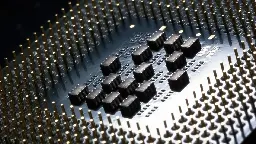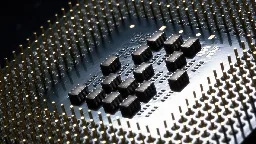Former Intel CPU engineer details how internal x86-64 efforts were suppressed prior to AMD64's success
Former Intel CPU engineer details how internal x86-64 efforts were suppressed prior to AMD64's success

Former Intel CPU engineer details how internal x86-64 efforts were suppressed prior to AMD64's success



This highlights really well the importance of competition. Lack of competition results in complacency and stagnation.
It's also why I'm incredibly worried about AMD giving up on enthusiast graphics. I have very few hopes in Intel ARC.
I expect them to merge enthusiast into the pro segment: It doesn't make sense for them to have large RDNA cards because there's too few customers just as it doesn't make sense for them to make small CDNA cards but in the future there's only going to be UDNA and the high end of gaming and the low end of professional will overlap.
I very much doubt they're going to do compute-only cards as then you're losing sales to people wanting a (maybe overly beefy) CAD or Blender or whatever workstation, just to save on some DP connectors. Segmenting the market only makes sense when you're a (quasi-) monopolist and want to abuse that situation, that is, if you're nvidia.
True, in simple words, AMD is moving towards versatile solutions that is going to satisfy corporate clients and ordinary clients while producing same thing, their apu and xdna architecture is example, apu is used in playstation and Xbox, xdna and epyc used in datacenters, and AMD is uniting btb and btc merchandise for manufacture simplification
They honestly seem to be done with high-end "enthusiast" GPUs. There is probably more money/potential for iGPUs and low/middle level products optimized for laptops.
Their last few generations of flagship GPUs have been pretty underwhelming but at least they existed. I'd been hoping for a while that they'd actually come up with something to give Nvidia's xx80 Ti/xx90 a run for their money. I wasn't really interested in switching teams just to be capped at the equivalent performance of a xx70 for $100-200 more.
Wouldn't be the first time they did this though, I wouldn't be surprised if they jump back into the high end once they're ready.
I don't see this happening with both consoles using AMD, honestly I could see Nvidia going less hard on graphics and pushing more towards AI and other related stuff, and with the leaked prices for the 5000s they are going to price themselves out of the market
Crypto and AI hype destroyed the prices for gamers.
I doubt we ate ever going back the
I am on 5-10 years upgrade cycle now anyway. Sure new shiti is faster but shot from 2 gen ago is still going everything I need. New features like ray tracing are hardly even worth. Lime sure it is cool but what is the actually value proposition.
If you bought hardware for raytecing, kinda Mehh.
With that being said. Local LLM is a fun use-case
This is absolutely true, but it wasn't the case regarding 64 bit x86. It was a very bad miscalculation, where Intel wanted bigger more profitable server marketshare.
So Intel was extremely busy with profit maximization, so they wanted to sell Itanium for servers, and keep the x86 for personal computers.
The result was of course that X86 32 bit couldn't compete when AMD made it 64bit, and Itanium failed despite HP-Compaq killing the worlds fastest CPU at the time the DEC Alpha, because they wanted to jump on Itanium instead. But the Itanium frankly was an awful CPU based on an idea they couldn't get to work properly.
This was not complacency, and it was not stagnation in the way that Intel made actually real new products and tried to be innovative, but with the problem that the product sucked and was too expensive for what it offered.
Why the Alpha was never brought back, I don't understand? As mentioned it was AFAIK the worlds fastest CPU when it was discontinued?
That's still complacency. They assumed consumers would never want to run workloads capable of using more than 4 GiB of address space.
Sure, they'd already implemented physical address extension, but that just allowed the OS itself to address more memory by enlarging the page table. It didn't increase the virtual address space available to applications.
The application didn't necessarily need to use 4 GiB of RAM to hit those limitations, either. Dylibs, memmapped files, thread stacks, various paging tricks, all eat up the available address space without needing to be resident in RAM.
Even successful companies themselves take care in not putting all eggs in one basket on anything they do. Having alternatives is a life saver. We should ensure that we have alternatives too.